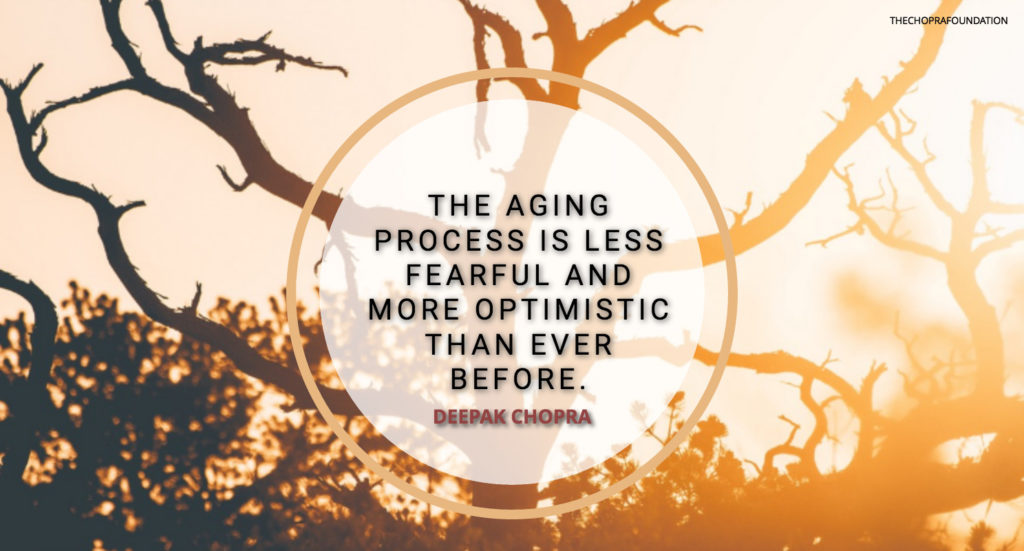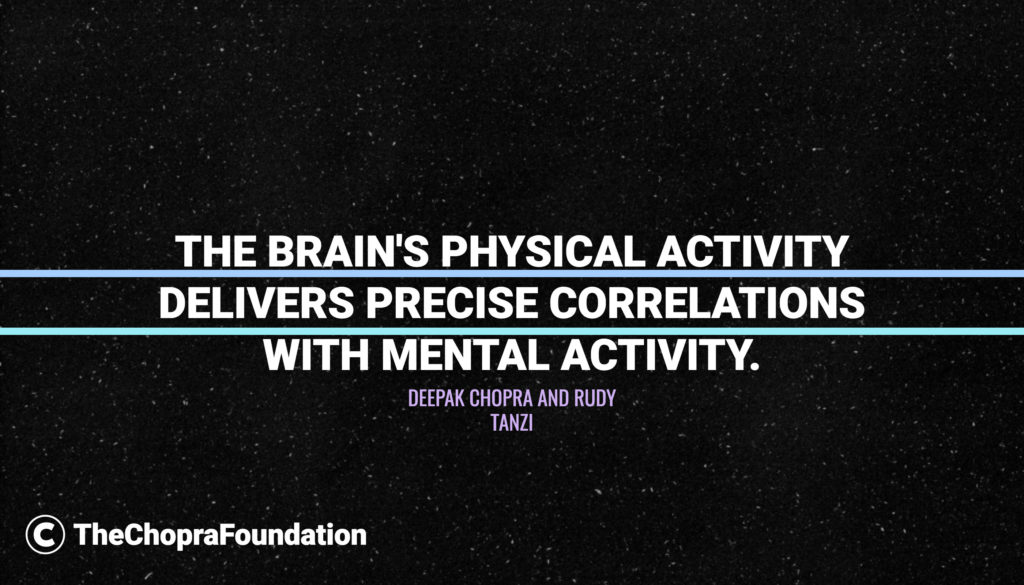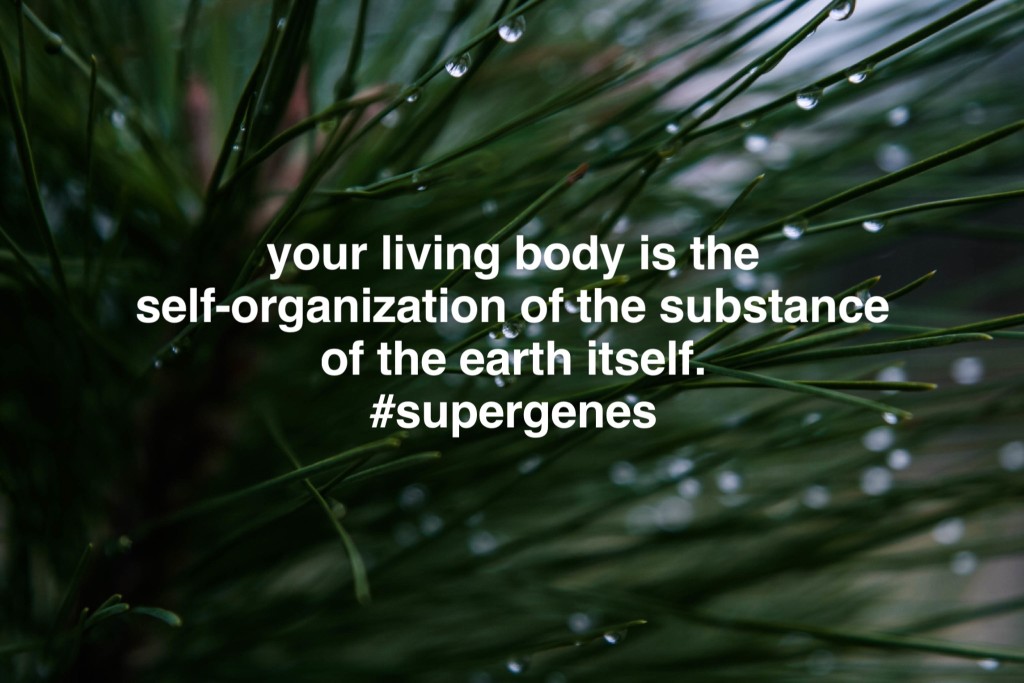By Deepak Chopra, MD and Rudolph E. Tanzi, PhD

When people think about growing old, they blame the passage of time—the years roll by, and the body stops looking younger year by year. But the latest science disputes this view. A person ages because the cells in their body age, and cells live only in the present. This is one reason memory remains such a mystery. Brain cells function through electrochemical activity that occurs the instant a chemical reaction or electrical impulse is able to occur. There are no pauses to think about reacting; if the potential is there, the action must follow.
Whatever a brain cell does, it can’t go back to the past. So how do we seem to go back into the past when we remember a childhood birthday party or our first kiss? No one knows, but when the answer is found, it won’t involve time travel, either forward or backward. If you expand this to every cell in the body, they too must function instantly in the present moment when any two molecules interact. So the problem of aging can be stated as the gap between how a cell lives and how a person lives. As people, we repeat the past, get stuck in old habits, cling to stubborn beliefs, fear the future, and in general occupy mental states that are not in the now.
If you can return to the now, you close the gap between your life and the life of your cells, and by doing this, you can prevent aging or even reverse it. Aging isn’t one thing but a complex of possibilities. Which possibilities get triggered is infinitely complicated, but no one has ever shown that any symptoms of aging must occur.
Even though we can all tick off the disagreeable signs of growing old—creaky joints, wrinkled skin, loss of energy, erratic sleep, declining memory, and so on—there is someone who has actually improved as they aged in each of these areas, except perhaps for wrinkles. However unusual, there are individuals who retain limberness, energy, good sleep, mobility, and memory.
In fact, once we abandon the notion that aging is normal, it dawns that aging might actually be the sum of disease processes, and without these disease processes, cells can function at a high level of efficiency for a very long time. (In laboratory experiments it has been shown that a cell can only divide a limited number of times, around 50, which would place a physical limit on lifespan, and this may indicate a genetic barrier that cannot be crossed. However, in real life people live to be 100 already, and the goal is to remain well up to an advanced age, not to aim for immortality.)
In our latest book, The Healing Self, we deal in depth with the prospects of anti-aging and the reversal of the aging process. We also outline an anti-aging regimen, which lists things each person can either do or undo.
DO
- Meditate
- Join a social support group
- Strengthen emotional bonds with family and close friends.
- Take a multivitamin and mineral supplement (if you are age sixty-five and older).
- Maintain a balance of rest and activity.
- Explore a new interest.
- Take up a challenging mental activity.
- UNDO
- Don’t be sedentary—stand up and move throughout the day.
- Examine your negative emotions.
- Heal injured relationships that are meaningful to you.
- Be mindful of lapses and imbalances in your diet.
- Address negative stereotypes about aging and ageism.
- Consider how to heal the fear of death.
Each of these choices is correlated with maintaining a state of wellness throughout one’s lifetime. In our program, we advise doing or undoing one thing on the list, then not moving on to the next thing until the first choice is well established in your daily life.
Of everything on this list, meditating is critical because it brings the mind into the present moment, where the body always lives. There is much more to be said about “the power of now,” but the key here is how aging is affected. Finding a way to live in the present moment can be looked upon as a spiritual aspiration, but as far as your cells are concerned, the present moment is where every decision to survive and thrive is made. That should be our attitude also.
Deepak Chopra MD, FACP, founder of The Chopra Foundation and co-founder of The Chopra Center for Wellbeing, is a world-renowned pioneer in integrative medicine and personal transformation, and is Board Certified in Internal Medicine, Endocrinology and Metabolism. He is a Fellow of the American College of Physicians and a member of the American Association of Clinical Endocrinologists. Chopra is the author of more than 80 books translated into over 43 languages, including numerous New York Times bestsellers. His latest books are The Healing Self co-authored with Rudy Tanzi, Ph.D. and Quantum Healing (Revised and Updated): Exploring the Frontiers of Mind/Body Medicine. www.deepakchopra.com
Rudolph E. Tanzi, Ph.D. is the Joseph P. and Rose F. Kennedy Professor of Neurology at Harvard University and Vice Chair of Neurology at Mass. General Hospital. Dr. Tanzi is the co-author with Deepak Chopra of the New York Times bestsellers, Super Brain, and Super Genes. His latest book is The Healing Self co-authored with Deepak Chopra. He is also an internationally acclaimed expert on Alzheimer’s disease and brain health with over 500 research publications. He was included in TIME Magazine’s “TIME 100 Most Influential People in the World.”




 By Deepak Chopra, MD, Menas Kafatos, PhD, Bernardo Kastrup, PhD, Rudolph Tanzi, PhD
By Deepak Chopra, MD, Menas Kafatos, PhD, Bernardo Kastrup, PhD, Rudolph Tanzi, PhD